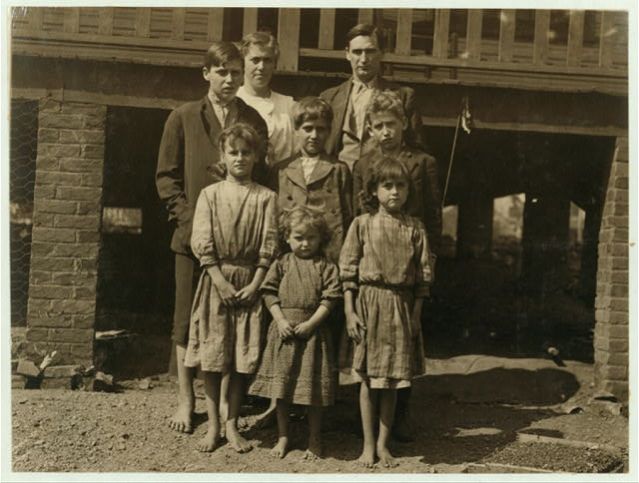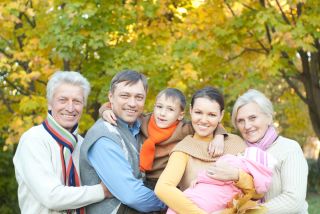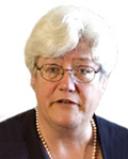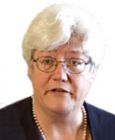Relationships
Who Are All Those Once-Removed Cousins and Unrelated Aunts?
Kinship can be confusing, but it's essential to the species.
Posted November 27, 2014
Family.
For most people, the holiday season, beginning with Thanksgiving, is more than a series of commemorations: It is a celebration of family: a time to reunite with people who, however distant they might be, remain closest to you in identity through shared history.

Jo Veal and family, 1901.
The shared preparation of a holiday dinner, or even a group meal out at a restaurant—our routines are centered on a continuing tradition of eating together. And in my experience, one topic that often comes up when family gathers for these once-a-year rituals is the question of relationships: What kind of kin are we, actually?
Anthropologists can answer this question: Kinship is one of my discipline's core areas of expertise.
Although I seldom rely on Wikipedia as an authority, in this case it is illustrative that the first sentence of the Wikipedia entry for "Kinship" is
In anthropology, kinship is the web of social relationships that form an important part of the lives of most humans in most societies, although its exact meanings even within this discipline are often debated.
For kinship to be defined, we have to assume the anthropological framework. But it's that "often debated" part that makes me wince when I am asked to clarify kinship: Are we first cousins, or cousins once removed?
The Internet has produced one kind of reply in a chart that identifies a formal structure of cousins based on the generation of your common ancestor.
What the builders of this handy chart don't explain, because they aren't anthropologists, is that this captures only one kind of kinship terminology, one that circulates in the United States, and that even there, it is by no means interpreted universally the same way.
What stabilizes this kinship mapping is its use in the law, both for inheritance and, as comments on the original chart posting quickly noted, in legal restrictions on sexual and marriage relations.
Anthropologists long ago went beyond the question of defining structures or terms that would let me easily answer questions of classification.
Carol Stack explored how people in a particular Midwestern African American community worked to create relationships they characterized with kinship terms like sister and cousin connecting people who would not be counted as kin in these legal charts.
Another classic anthropological study of American kinship, by Ward Goodenough, explored what he called "Yankee kinship." He comments that the terminology he documented, from his own experience, is:
... not shared by all North Americans or by all native speakers of English. I have encountered many fellow Americans who reckon degrees of cousinship differently and others who confine cousins to ego's generation entirely, regarding all collaterals in their parents' generation as their aunts and uncles rather than as their cousins.
Then there is the issue of people who are addressed using kinship terms even though they would not be counted in the legal charts of kinship. "Courtesy aunt" is one such extension of terminology, exemplified by Charles Dickens in an 1892 story:
"Rupert, this is my sister, Mrs. Cranstoune; your Aunt Deborah, by courtesy"...
This pretty old lady was an agreeable surprise, for until this moment he had never even heard of her existence.
"But it is a mere matter of courtesy, Mr. Leigh," she said, almost regretfully, "we are not really connected."
Plenty of aunts, uncles, sisters and cousins could express the same regrets and reservations: we think "we are not really connected," despite being treated as kin, because American kinship is grounded on a deeply embedded language of blood ties.
Identifying this as a core symbolic component of American kinship (violated in many, many ways in practice) was a major contribution of anthropologist David Schneider, singled out for comment by The New York Times when he died in 1995:
To Mr. Schneider, however, kinship was not a natural system founded on blood, or "that thin red liquid," as he called it, but instead an entire culture of powerful symbols and meanings.
If kinship is not "a natural system founded on blood," even where this framework exists in the U.S., we can ask the question: What serves to make kinship?
One answer: Eating together.
Eating together habitually literally makes the bodies of the social group similar in substance at a level that leaves traces in your bones: archaeologists can identify the different proportions of carbohydrates from different groups of plants, and of protein, sourced from marine fish or terrestrial animals, or from plants like beans, that were eaten by each person based on the nitrogen, carbon, and strontium isotopes left in the bones.
Anthropologist Mary Weismantel, in her research with indigenous people living in the Andes of Ecuador, explored how food literally makes kinship connections. She summarized the connections between eating and being related in the town of Zumbagua in a memorable phrase: "People become parents by feeding and caring for children over extended periods of time."
While offered as a characterization of one specific human experience, and thus not meant to be generalized, Weismantel presented her analysis as a contribution to anthropological studies of kinship. We build on it at the start of the season, as we reinforce the message of Thanksgiving: We eat this symbolic meal with the people to whom we are related; and we are related to the people with whom we eat this meal.
Bone deep, and as we feel it: Giving thanks for the people we feed and who feed us makes us kin—and makes us humankind.

privilege/Shutterstock
[h/t to David Rudner for links to the chart and Ward Goodenough's essay.]




